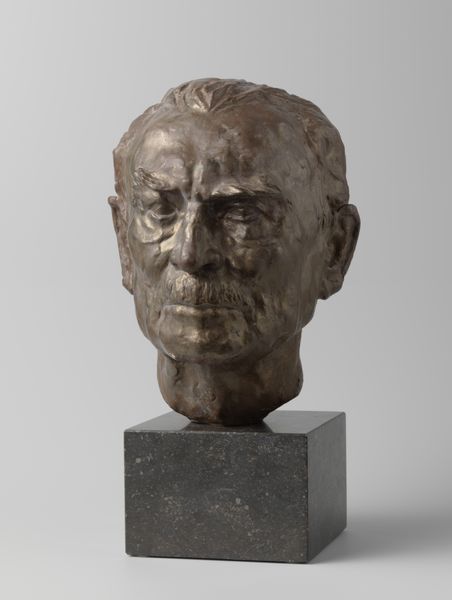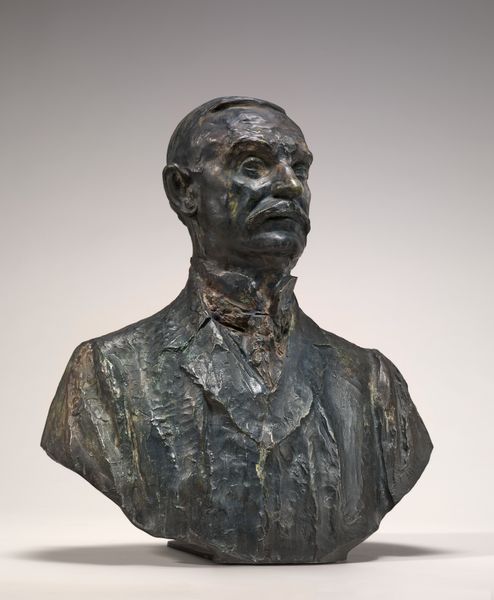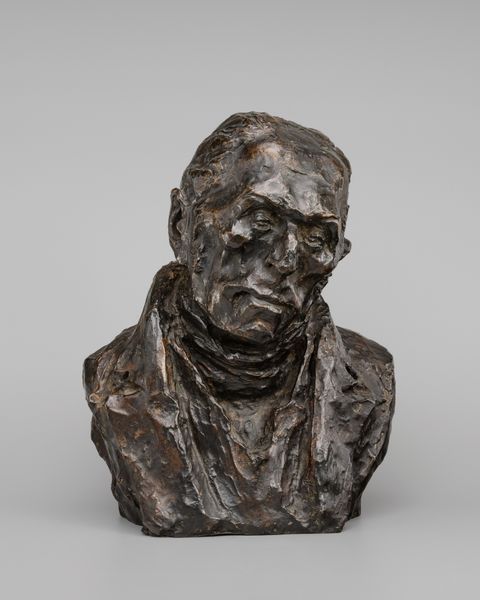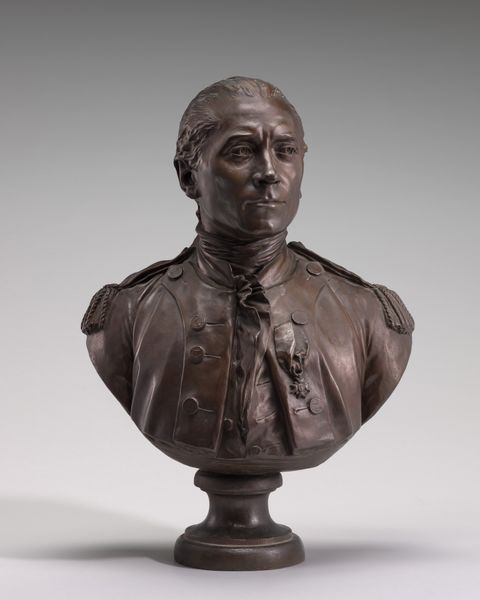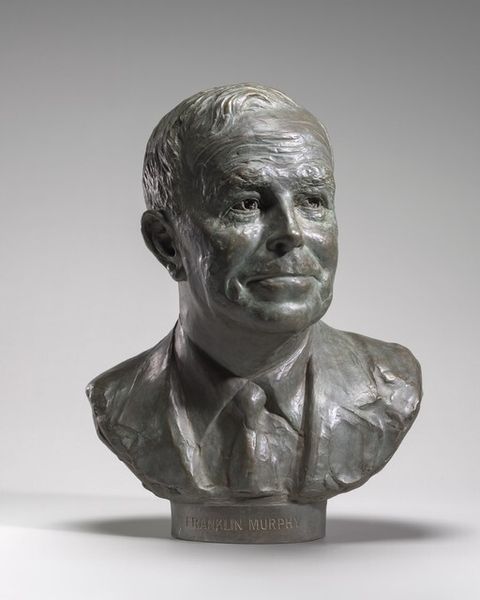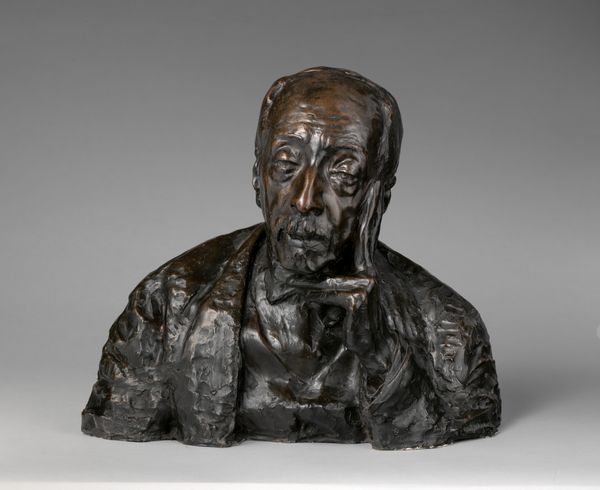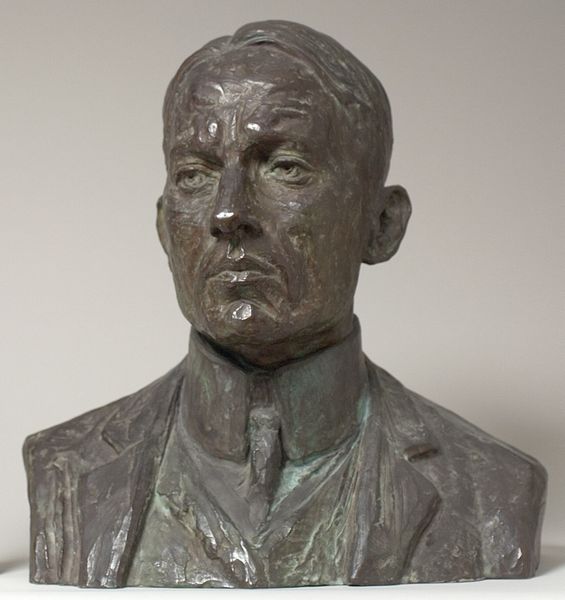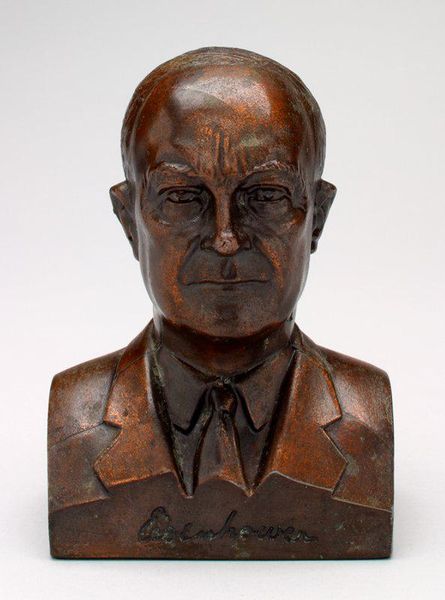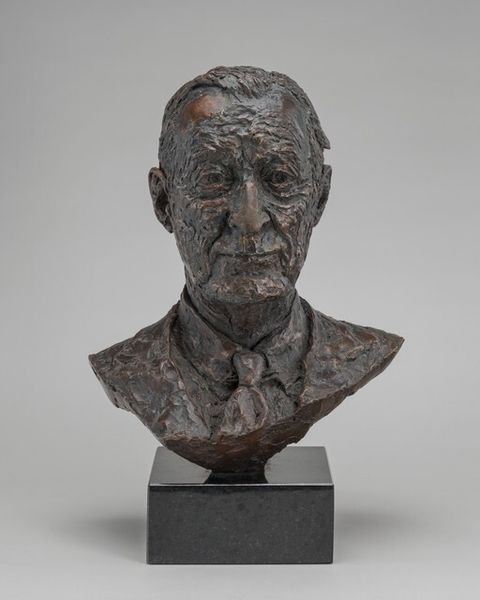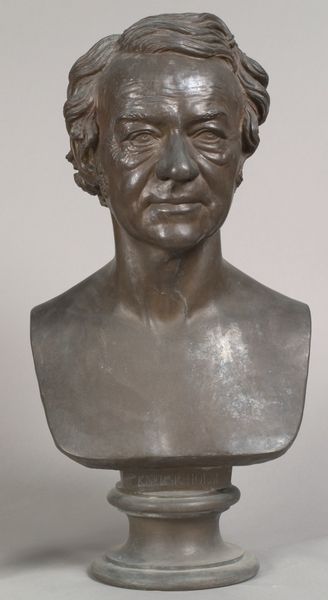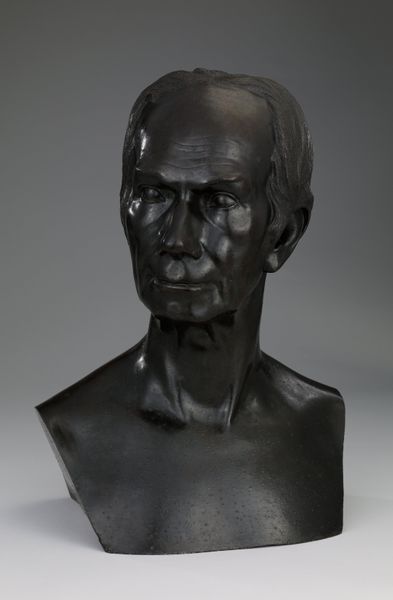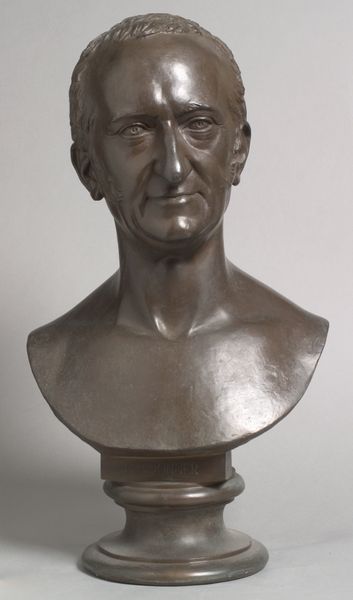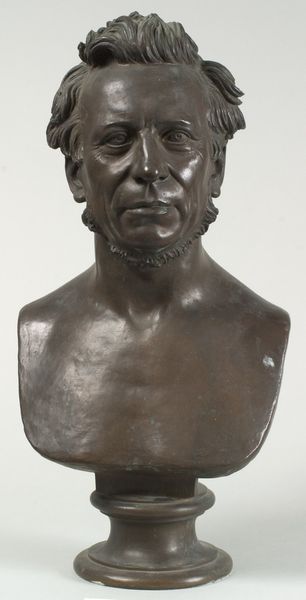
Dimensions: height 70 cm, width 54 cm, depth 37 cm, weight 36 kg
Copyright: Rijks Museum: Open Domain
Editor: Here we have Toon Dupuis’ bronze bust of Louis Bouwmeester created in 1902, depicting him in character as Coriolanus. It’s very imposing, capturing him in a Roman style. It feels quite academic, wouldn't you say? What strikes you when you look at this piece? Curator: It speaks volumes about the institutional relationship between theatre, national identity, and classical ideals at the turn of the century. Consider how Bouwmeester, a famous actor, is memorialized not just as himself, but through the lens of Roman heroism. Why Coriolanus, and not Hamlet? What does this choice suggest about the public role Bouwmeester was meant to embody? Editor: So, you're saying it's more about what Coriolanus represented culturally? I was initially drawn to the realism of the portrait but I understand your point about it being political in some way. Curator: Exactly. This wasn’t simply about capturing a likeness. Think about the Rijksmuseum as an institution and its mission during that period. Sculptures like this contributed to constructing a certain idea of Dutch cultural identity, drawing parallels between national pride and classical virtues, a familiar trope within Neoclassical and Academic Art movements of the time. To portray a celebrated actor as a Roman general... it's making a very deliberate statement about power, duty, and artistic legacy, isn't it? Editor: I suppose so. I never considered it in the light of what values were important for the institution presenting it at the time! This adds an extra layer of historical awareness that I didn't pick up on before. Curator: Indeed. The sculpture serves as an enduring artifact which highlights cultural expectations during the Second Golden Age of the Netherlands and it reflects on how historical narratives were utilized to bolster a nationalistic pride through prominent figures. Editor: This has given me much to think about in terms of how public art shapes the cultural landscape. Curator: And consider how it continues to do so. Art always serves a purpose beyond aesthetics.
Comments
No comments
Be the first to comment and join the conversation on the ultimate creative platform.
